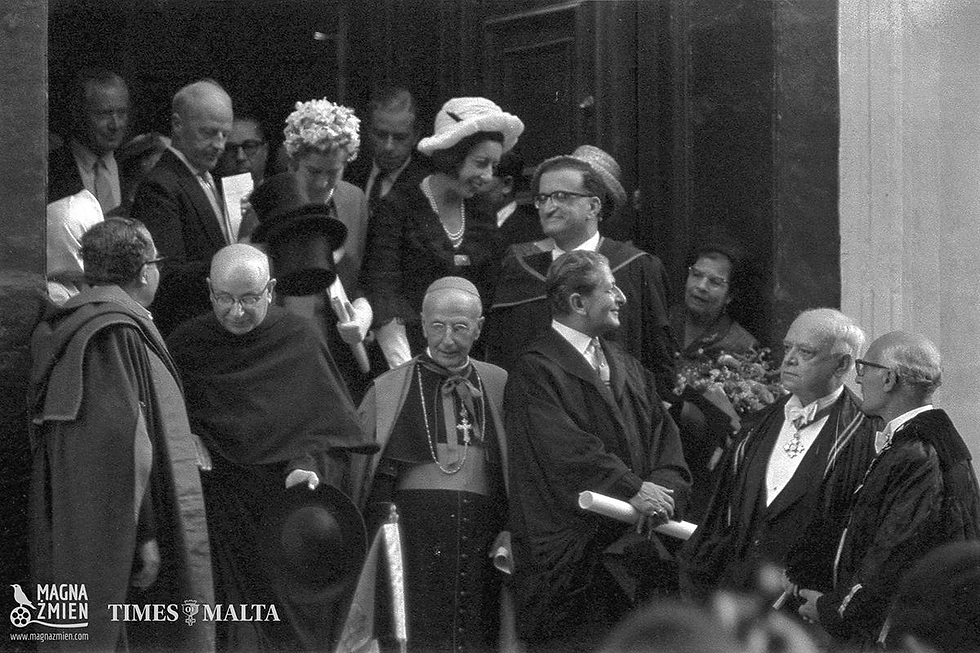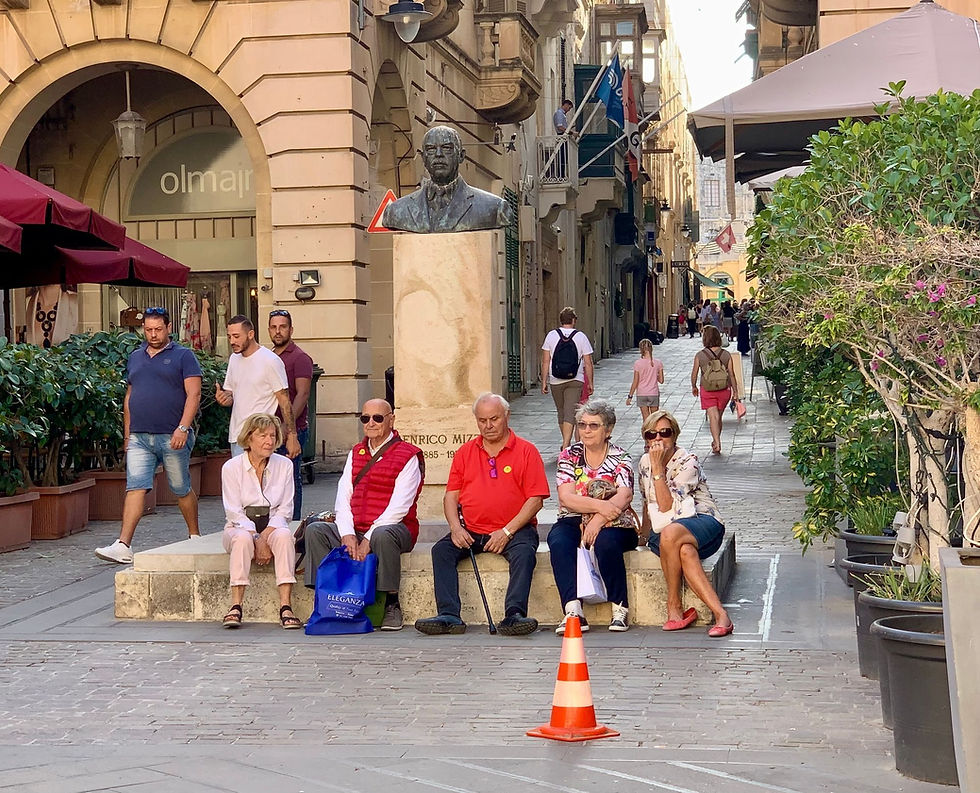Malta's North and South Political Divide
- Spunt Malta
- Aug 23
- 4 min read
Updated: Aug 24
Maltese politics has never been only about party leaders or policy platforms. It has always been grounded in families, neighbourhoods, and the movements of people across the island. For more than a century, political loyalties have been shaped as much by where one lived and who one married as by the manifestos of the two main parties.
The story begins even before the Second World War. In the early decades of the 20th century, political divides were drawn not along the Labour–Nationalist fault line that later defined Malta but between factions representing competing visions of Malta’s identity. The Nationalists, tied to Italian language and culture, clashed with Constitutionalists who favoured stronger alignment with Britain. Families in Sliema and other Anglicised coastal towns were drawn to the latter, while many rural and southern communities gravitated toward the former. The Church played a decisive role, shaping loyalties through schools and parish life. Political identity was already being transmitted through households and reinforced by local networks, setting the stage for the tribal politics that would dominate after independence.
By the time war arrived, Malta’s communities were already politically segregated. The bombing of the island intensified these divisions. Working-class families in the dockyard belt suffered devastating destruction, cementing Labour’s hold in the urban harbour areas. Sliema and Valletta, though battered, retained their middle-class character and connections to British administration, which would later tilt those voters toward the PN and its allies. The wartime experience did not erase divisions; it reinforced them.

In the post-war years, this reality was stark. Families from Sliema began moving inland as housing costs soared. New couples chose San Ġwann and Attard, which offered a more affordable alternative but retained echoes of Sliema’s culture because of existing British settlements. They were not abandoning their social identity so much as relocating it. In doing so, they carried with them the political traditions of their community, strengthening the Nationalist Party’s position in new suburbs.
Across the harbour, a different story was unfolding. Poverty and wartime destruction lingered in the Cospicua area, where Labour had its strongest base among dockyard workers and their families. Labour governments responded with a housing policy that went beyond bricks and mortar. By building new estates in Qormi and other inland localities, they enabled working-class families to move beyond the old harbour area. The social shift came with political consequences. Families who relocated carried their Labour loyalties with them, effectively planting new Labour enclaves in places that had not previously voted red.
The two main parties were not passive observers. They understood how family migration could cement their dominance and acted accordingly. Labour forged a lasting alliance with the General Workers’ Union, guaranteeing that dockyard families, civil servants, and other workers would remain loyal at the ballot box. It was no accident that at this time the party promoted policies such as integration with Britain, which it saw as a way of creating stronger economic ties that would benefit its base.
The Nationalist Party looked elsewhere for allies. Alarmed by the rising presence of the Anglican Church in Malta, the Catholic Church turned to the PN as a natural partner. This gave the Nationalists new leverage in the rural hinterland. Places like Siġġiewi and much of Gozo became reliable PN strongholds, bolstered not only by faith but by a wider sense of cultural identity tied to the party’s anti-British posture.

Over time, these dynamics hardened into political geography. The outer harbour remained Labour territory, while many inland and rural areas leaned Nationalist. In a country as small as Malta, where families are tight-knit and neighbours often share the same workplaces, political identity became a matter of social inheritance. Children often voted as their parents had, and those who married outside their “tribe” were the exception rather than the rule.
This helps explain why, despite successive economic booms, EU membership, and waves of social change, Malta’s political duopoly has remained intact. Smaller parties have tried to challenge it, but without the family-based networks that sustain Labour and the PN, their efforts have almost always ended in failure. Politics became less about policies and more about belonging.
Yet there are cracks in this old map. In the 2013 and 2017 elections, the number of swing voters increased. Surveys showed younger couples moving freely across the island without regard for the old frontiers of Labour and PN influence. Housing affordability is now less about choosing between Sliema and San Ġwann and more about whether to buy or rent at all. Migration is no longer driven by partisan strongholds, and with it, the link between place and party loyalty is weakening.
This generational shift raises difficult questions for the two main parties. Can Labour continue to rely on the migration patterns it engineered in the 1960s and 70s, or will younger voters renting in St Paul’s Bay or Marsaskala be less inclined to inherit their parents’ red loyalties? Can the PN still draw strength from its alliance with the Church when Malta is increasingly secular and younger voters are more influenced by global issues like climate change or digital rights than by traditional institutions?
At the same time, new opportunities open up. Civic movements and NGOs such as Moviment Graffitti have shown that activism outside Parliament can capture public attention in ways that traditional parties often cannot. Their success in halting controversial development projects demonstrates that voters are willing to engage on issues when they feel directly affected. Smaller parties have yet to convert this into electoral success, but the rise of swing voters suggests a window exists.
Still, inertia should not be underestimated. Families remain powerful agents of political socialisation, and the legacy of decades of tribal voting continues to run deep. In local councils and village clubs, partisan loyalties are reinforced daily. For many Maltese, politics remains a matter of “us” versus “them,” with little room in between.
Malta is unlikely to shed this tribalism overnight. But Malta's North and South political divide is not as solid as it once was. Younger couples moving into new areas, renting rather than buying, and working in industries untied to the old Labour and PN networks may gradually redraw the map. Whether that leads to genuine pluralism or merely a new balance within the duopoly is uncertain.
What is clear is that political loyalties are no longer as fixed to place as they were in the past. Geography created Malta’s political tribes. Demography may yet undo them.




Comments